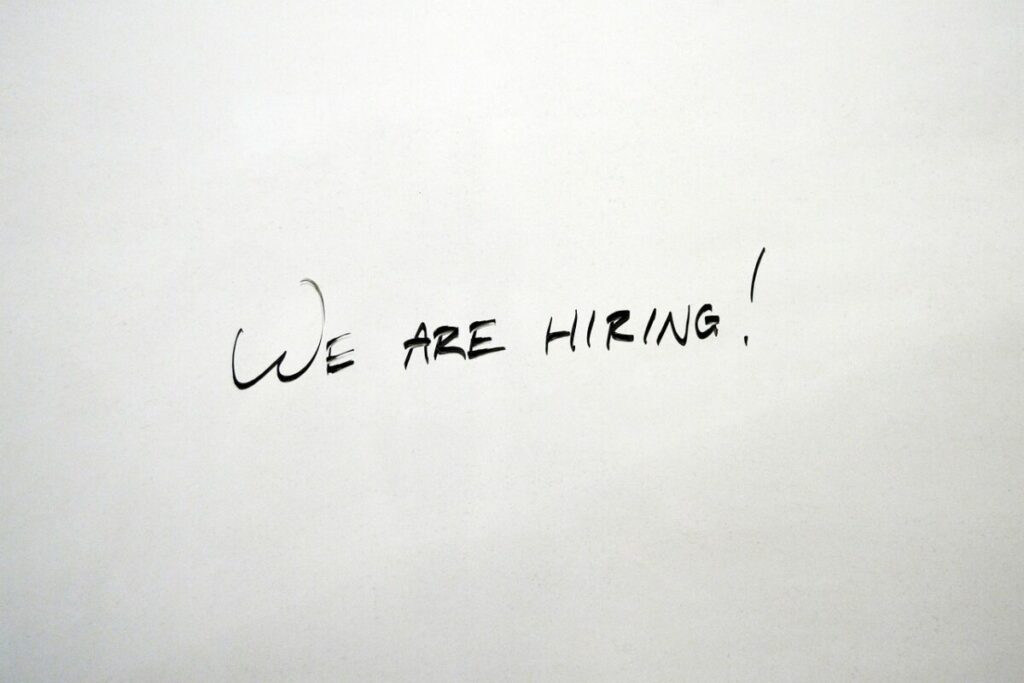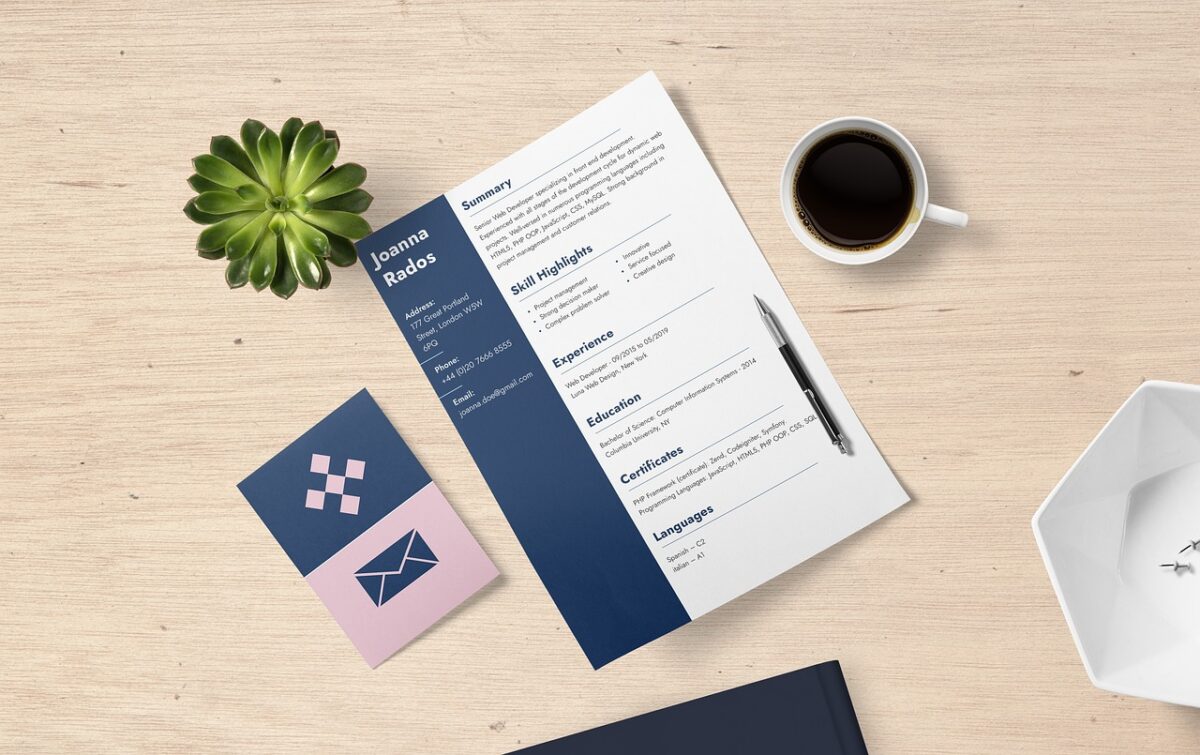How To Recruit Candidates For Technical Jobs

Recruiting candidates for technical jobs is a critical task that can significantly impact a company’s success. Whether you are looking for IT professionals, engineers, or scientists, finding the right talent ensures your business can innovate, grow, and maintain a competitive edge. Effective recruitment strategies help attract skilled candidates who meet the technical requirements and fit well within the company culture.
Our blog, explores the key steps to successfully recruit candidates for technical roles. We will cover everything from understanding the technical job landscape and crafting compelling job descriptions to writing effective job adverts and leveraging various recruitment channels. Additionally, we will provide tips on screening and shortlisting candidates, conducting effective interviews, and making competitive job offers. By the end of this guide, you will have a comprehensive understanding of how to streamline your recruitment process and secure top technical talent for your organisation. For further insights, don’t forget to check out our detailed guide, A Guide On How To Hire.
Highlights And Key Takeaways:
- Creating a well-crafted job description is crucial in attracting qualified candidates for tech roles and you should use clear language, highlight the benefits, focus on growth, and showcase your company culture.
- Using engaging language in job adverts can make a significant difference in attracting the right candidates and should have a catchy opening, highlight growth, and emphasise culture.
- Leveraging a mix of traditional and digital recruitment channels is essential for effectively recruiting top talent for technical roles, and posting on job boards remains one of the most effective ways to reach a wide audience of job seekers.
- To streamline your hiring process and effectively target candidates, access our free library of pre-written job descriptions covering thousands of technical jobs.
Quick Links:
- Understanding The Technical Job Landscape
- Crafting Compelling Tech Industry Job Descriptions
- Writing Effective Job Adverts
- Leveraging Various Recruitment Channels
- Screening And Shortlisting Candidates
- Conducting Effective Interviews
- Making The Job Offer And Onboarding
- Hiring Process Resources
- Tech Talent And Recruitment Process FAQs
Understanding The Technical Job Landscape
Technical jobs encompass various roles across various sectors, including IT, engineering, and science. In the IT sector, tech professionals work in fields such as software development, cybersecurity, and data analysis. Engineering roles span disciplines like civil, mechanical, and electrical engineering, where professionals design, build, and maintain infrastructure and machinery. The science sector includes roles in biotechnology, environmental science, and research, where experts apply scientific knowledge to solve complex problems and innovate.
The UK job market for technical roles is currently experiencing high demand. Rapid technological advancements and an increasing reliance on digital infrastructure across industries drive this surge. Consequently, a significant skills gap, particularly in software development and cybersecurity, makes it challenging for employers to find top talent. The tech sector is growing at an unprecedented rate, and tech jobs are among the most advertised and sought-after.
Our blog, Recruitment Strategy For 2024, is a comprehensive resource that delves into the latest recruitment trends. It provides data on the most advertised jobs and the most searched-for roles, equipping you with the knowledge you need to stay ahead in the competitive tech job market. Staying informed about these trends is crucial for employers aiming to attract and retain top tech talent. Understanding the current landscape helps in crafting effective recruitment strategies that address the specific needs and expectations of tech professionals.
Crafting Compelling Tech Industry Job Descriptions

Creating a well-crafted job description is crucial in attracting qualified candidates for tech roles. A detailed and clear job description helps ensure that you attract the best talent by providing a comprehensive overview of the role and its requirements. It sets the expectations for employers and potential employees, ensuring that only those with the necessary technical expertise and problem-solving skills apply. For further guidance, refer to our blog on How To Write A Job Description.
Key Components to Include in a Technical Job Description
Job Title:
- Clear and Specific: The job title should accurately reflect the role and level within the organisation. Examples include “Software Developer,” “Cybersecurity Analyst,” or “Mechanical Engineer.” For more insights, see our blog on What Is A Job Title?
Responsibilities:
- Detailed and Concise: Outline the key duties and responsibilities associated with the role. This helps candidates understand what is expected of them. Examples include “Develop and maintain software applications,” “Conduct security assessments,” and “Design and oversee construction projects.” For more information, refer to our blog on What Are Job Responsibilities?
Required Skills:
Hard Skills – List the specific technical skills necessary for the role. Examples include:
- Python
- JavaScript
- SQL
- C++
- HTML/CSS
- AWS
- Microsoft Azure
- Linux
- Docker
- Kubernetes
- TensorFlow
- MATLAB
- AutoCAD
- SolidWorks
- PLC Programming
- Network Security
- Data Analysis
- Machine Learning
- Cloud Computing
- DevOps
Soft Skills – Highlight important interpersonal and problem-solving skills. Examples include teamwork, communication, adaptability, and time management.
Qualifications:
Educational Background – Specify the necessary academic qualifications. Examples include:
- Bachelor’s degree in Computer Science
- Master’s degree in Electrical Engineering
- PhD in Biotechnology
- HND in Mechanical Engineering
- Chartered Engineer (CEng) status
- Professional certifications such as CompTIA Security+, AWS Certified Solutions Architect, or Cisco Certified Network Associate (CCNA)
For detailed guidance, see our blogs on What Hard Skills To Include In A Job Description and What Qualifications Should I Include In A Job Description?
Tips for Making Job Descriptions Clear and Attractive
- Use Clear Language: Avoid jargon and be precise in your wording to ensure that potential candidates easily understand the job description. See our blog on How To Choose The Best Words When Writing Job Descriptions.
- Highlight Benefits: Include information about the benefits of working with your company, such as professional development opportunities, flexible working hours, and competitive salaries.
- Focus on Growth: Emphasise opportunities for career advancement and skill development within your organisation.
- Incorporate Company Culture: Give potential candidates a glimpse into your company culture and values, helping them envision themselves as part of your team.
By incorporating these elements and following these tips, you can create compelling job descriptions that attract qualified talent with the right blend of tech skills and problem-solving abilities, ensuring you secure the best talent for your technical roles.
Writing Effective Job Adverts

Difference Between Job Descriptions and Job Adverts
Understanding the distinction between job descriptions and job adverts is crucial for attracting the right candidates. A job description provides a detailed overview of the role’s responsibilities, required skills, and qualifications. In contrast, a job advert is a marketing tool designed to engage and attract potential candidates by highlighting the unique selling points of the role and the company. For a more detailed explanation, refer to our blog, The Difference Between A Job Description And A Job Advert.
How to Highlight the Unique Selling Points of the Role and the Company
To attract top talent, it’s essential to emphasise what makes the role and your company stand out. This includes showcasing a good company culture, career development opportunities, and any unique benefits you offer. Highlighting these aspects not only draws the attention of potential candidates but also strengthens your employer branding. Building a strong employer brand is particularly important for SMEs, as it helps to attract and retain high-quality candidates in a competitive market. For further insights, see our blog, Why Should SMEs Build An Employer Brand? – part of our free Small Business Guide For Cost Effective Recruitment.
Best Practices for Formatting and Structuring Job Adverts
A well-structured job advert is key to capturing the interest of potential candidates. Here are some best practices for formatting and structuring:
- Clear and Concise Title: Use a specific and straightforward job title.
- Engaging Opening: Start with a captivating introduction highlighting the job’s most exciting aspects and the company.
- Role Overview: Briefly summarise the role’s key responsibilities and what the day-to-day looks like.
- Required Skills and Qualifications: List the essential skills and qualifications without overwhelming the reader.
- Company Culture and Benefits: Include a section about your company culture and the benefits you offer. For tips, you can read our guide, How To Infuse Company Culture And Brand Values Into Your Job Descriptions.
- Call to Action: End with a strong call to action, encouraging candidates to apply. You can explore the nuances of crafts CTAs in our article, What Role Does A Call To Action Play In A Job Description?
For a complete overview of the topic, check out our blog, How To Write A Job Advert.
Examples of Engaging Job Advert Language
Using engaging language in job adverts can make a significant difference in attracting the right candidates. Here are some examples:
- Catchy Opening: “Are you a creative problem-solver passionate about technology? Join our innovative team at XYZ Company and make a real impact!”
- Highlighting Growth: “Looking for a place where your career can soar? At ABC Corp, we invest in your professional development with continuous learning opportunities.”
- Emphasising Culture: “Join a workplace where collaboration, diversity, and work-life balance are not just buzzwords but a way of life. At DEF Ltd, we believe in creating a supportive and dynamic environment for our employees.”
For more examples of catchy job advert language, visit our blog, Catchy Job Adverts That Stand Out.
By following these guidelines, Hiring Managers and recruitment teams can craft compelling job adverts that attract the right candidates and reflect a strong employer brand and good company culture.
Leveraging Various Recruitment Channels

Leveraging a mix of traditional and digital recruitment channels is essential for effectively recruiting top talent for technical roles. Each channel offers unique advantages and, when used strategically, can help you reach a broader pool of qualified candidates.
Overview of Traditional and Digital Recruitment Channels
Traditional recruitment channels include print advertisements, career fairs, and recruitment agencies. While these methods still hold value, digital channels have increasingly become the go-to platforms for reaching tech professionals. Digital recruitment channels encompass job boards, social media, professional networks, and online communities.
How to Use Job Boards, Social Media, and Professional Networks Effectively
- Job Boards: Posting on job boards remains one of the most effective ways to reach a wide audience of job seekers. Utilise both general and niche job boards to maximise your reach. Our blog on Posting On Job Boards And Leveraging Fixed-Cost Recruitment provides insights into cost-effective strategies for job board advertising. For a list of recommended job boards, refer to our Top UK Job Sites guide.
- Social Media: Social media platforms like LinkedIn, Twitter, and Facebook are powerful tools for job advertising. They allow you to target specific demographics and engage with passive candidates. Our blog on Job Advertising On Social Media offers tips on creating effective social media campaigns and how to leverage social media platforms to attract the right candidates.
- Professional Networks: Platforms like LinkedIn provide access to a vast network of professionals. Use these networks to connect with potential candidates, share job postings, and participate in relevant groups and discussions to boost your employer brand and visibility.
Benefits of Attending Industry Events and Networking Opportunities
Attending industry events like tech conferences, hackathons, and networking meetups can be incredibly beneficial. These events provide opportunities to meet potential candidates face-to-face, assess their skills and fit for your organisation, and build relationships with top talent. Networking at these events can also enhance your understanding of industry trends and innovations, keeping you informed about the skills and expertise in demand.
Role of Recruitment Agencies and Headhunters in Finding Technical Talent
Recruitment agencies and headhunters are crucial in identifying and attracting technical talent, especially for specialised or senior positions. They have access to extensive candidate databases and can provide valuable insights into the job market. By partnering with agencies that specialise in tech recruitment, you can save time and resources while ensuring that you connect with highly qualified candidates. These professionals often have relationships with passive candidates who might not actively seek new opportunities but are open to the right offer.
By leveraging a combination of these recruitment channels, you can create a comprehensive and effective strategy to attract and secure top technical talent for your organisation.
Screening And Shortlisting Candidates

Effective screening and shortlisting are crucial in the recruitment process. They ensure you identify and select the most skilled professionals who can contribute to your project’s success. By employing best practices and leveraging advanced tools, your recruitment team can efficiently find candidates who best fit your organisation.
Best Practices for Initial Screening
- CVs and Cover Letters: Review CVs and cover letters to identify candidates with relevant experience and qualifications. Look for tailored applications highlighting key skills and accomplishments related to the job. This initial step helps filter out unqualified candidates and focuses your attention on those who meet the basic requirements.
- Online Profiles: Examine candidates’ online profiles on platforms like LinkedIn to gain additional insights into their professional background and colleague endorsements. Online profiles can reveal a candidate’s career trajectory, skills, and industry connections, providing a more comprehensive view of their suitability.
Our services include CV Targeting and Candidate Filtering as part of various Job Advertising Packages and Flat Fee Recruitment Packages, designed to streamline this process and ensure you receive applications from talented candidates who meet your criteria.
Tools and techniques for assessing technical skills include:
- Tests and Assessments: Implement technical tests and assessments to evaluate candidates’ technical skills objectively. These can include coding challenges, problem-solving tasks, and aptitude tests tailored to the role’s specific requirements.
- Portfolios: Request portfolios from candidates, especially for roles in software development, design, and engineering. Reviewing portfolios allows you to assess the quality and relevance of their past work, providing a tangible demonstration of their capabilities.
- Coding Challenges: For software development roles, use coding challenges to test candidates’ programming skills in real time. Platforms like HackerRank and Codility offer a range of challenges that simulate real-world scenarios, helping you identify candidates with strong coding abilities.
How to Shortlist Candidates Effectively and Fairly
Establish clear criteria based on the job description and required skills to shortlist candidates effectively and fairly. Create a scoring system to objectively evaluate each candidate’s qualifications, experience, and performance in assessments:
- Consistency: Ensure all candidates are evaluated using the same criteria and process. This consistency helps eliminate bias and ensures a fair comparison of candidates.
- Collaborative Decision-Making: Involve multiple members of the recruitment team in the shortlisting process to provide diverse perspectives and reduce the risk of individual bias. Collective input helps identify the most suitable candidates from your talent pools.
- Video Screening: Conduct initial interviews using video screening tools. This method saves time and allows you to assess candidates’ communication skills and cultural fit before inviting them for in-person interviews. Our Video Screening service is included in various Job Advertising Packages and Flat Fee Recruitment Packages, enhancing the efficiency and effectiveness of your screening process.
By following these best practices and leveraging the right tools, your recruitment team can find candidates who are not only technically qualified but also a great fit for your organisation. This structured approach ensures you identify talented candidates who can drive your project’s success.⬤
Conducting Effective Interviews

Conducting effective interviews is a pivotal part of the hiring process, ensuring you select the best candidates for your technical roles. Here are some key tips for preparing and conducting successful technical interviews:
- Preparation: Before the initial interview, review the candidate’s CV, cover letter, and assessment results to understand their background and skills. Prepare a structured interview plan with a mix of question types to evaluate the candidate comprehensively.
- Conducting the Interview: Create a welcoming environment and start with a brief introduction about the company and the role. Ensure the interview process is structured and each candidate is asked the same core questions to maintain consistency and fairness.
Types of interview questions to ask include:
- Behavioural Questions: These questions assess how candidates have handled situations in the past, providing insights into their problem-solving skills and work ethic. Example: “Can you describe a time when you overcame a significant challenge at work?”
- Technical Questions: These evaluate the candidate’s technical expertise and problem-solving abilities. An example is, “Explain how you would optimise a database query.”
- Situational Questions: These questions present hypothetical scenarios to assess how candidates approach and resolve potential challenges. Example: “What would you do if you discovered a critical bug in a deployed application?”
To ensure you select the best candidates, evaluate their technical skills and cultural fit. Technical skills can be assessed through coding challenges, technical questions, and reviewing their portfolio. Cultural fit can be gauged through behavioural and situational questions and observing their communication style and values alignment with the company culture.
Maintaining timely and clear communication throughout the interview process is crucial. Inform candidates about the next steps and provide feedback promptly. This professionalism reflects well on your organisation and keeps the best candidates engaged.
Whether you are a Hiring Manager, business owner, or Human Resources professional, you can find these interview tips and more on our Interview Resources page. Following these guidelines can streamline your interview process and make well-informed hiring decisions.
Making The Job Offer And Onboarding

After identifying the best candidates through your recruitment process, it’s crucial to make a competitive job offer to secure top talent in the tech industry. A compelling job offer should include:
- Salary: Ensure the salary is competitive and reflects the market rates for the position.
- Benefits: Highlight additional benefits such as healthcare, retirement plans, and flexible working arrangements.
- Growth Opportunities: Emphasise opportunities for professional development, career advancement, and ongoing training.
By offering a well-rounded compensation package, you can create a positive candidate experience and increase the likelihood of acceptance. For more detailed guidance, refer to our blog, How To Make A Job Offer: A Step-By-Step Guide To Writing Job Offers.
Best Practices for a Smooth Onboarding Process
A smooth onboarding process is essential for setting new hires up for success. Best practices include:
- Preparation: Ensure all necessary equipment and access are ready before the new hire’s first day.
- Orientation: Provide a comprehensive orientation that includes an introduction to the company’s mission, values, and key policies.
- Training: Offer initial training sessions to familiarise new hires with their roles and responsibilities.
A well-organised onboarding process contributes to a positive candidate experience and helps new employees quickly become productive members of the team. Integration into the team and company culture is a critical aspect of onboarding. To ensure new hires feel welcomed and valued:
- Mentorship: Pair new hires with a mentor or buddy to guide them through their initial weeks.
- Team Interaction: Facilitate introductions and interactions with team members through meetings and social events.
- Regular Check-ins: Schedule regular check-ins to address questions or concerns and provide feedback.
Focusing on these areas can help new hires feel connected and engaged, fostering a positive work environment and enhancing retention. This comprehensive approach ensures a seamless transition from the recruitment process to full integration into your organisation.
For more tips and strategies, explore our Candidate Experience Guide. It provides further insights into maintaining a positive candidate experience throughout the hiring journey.
Hiring Process Resources
To streamline your hiring process and ensure you attract top talent, access our free library of pre-written job descriptions with thousands of job titles. Using these pre-written templates offers numerous benefits, including enhanced efficiency and accuracy in creating job postings that effectively communicate the requirements and appeal of your roles.
The benefits of using pre-written job description examples include:
- Efficiency: Save time by utilising ready-made samples that cover a wide range of job titles and descriptions.
- Accuracy: Ensure consistency and clarity in your job descriptions, reducing the risk of miscommunication.
- Comprehensiveness: Access detailed templates that include key components such as responsibilities, required skills, and qualifications.
Resources Available
- Recruitment Resources: Comprehensive guides and tools to help you navigate the recruitment process effectively.
- Interview Resources: Tips and strategies for conducting successful interviews to select the best candidates.
- Job Description Template: A blank template for crafting clear and compelling job descriptions.
- Job Advert Template: A blank templates for creating engaging job adverts that attract the right candidates.
- How To Hire Guide: A step-by-step hiring guide covering everything from job postings to onboarding.
Recommended Blogs
- How To Recruit Someone From A Competitor: Strategies for attracting talent from competing companies.
- How Do You Recruit Someone From A Different Industry?: Tips for hiring candidates with diverse industry backgrounds.
- How To Recruit People With Transferable Skills: Identifying and leveraging transferable skills in potential hires.
- How To Recruit For Niche Roles: Approaches for finding candidates for specialised and hard-to-fill positions.
- How To Hire Your First Employee: A step-by-step how-to guide from assessing business needs, to advertising your role, and onboarding a candidate.
Visit our Recruitment Resources page to explore these tools and more, and take the first step towards optimising your hiring process today.
Tech Talent And Recruitment Process FAQs
Next, we answer the questions of Hiring Managers, business owners, and HR teams on the hiring process for sourcing the top tech talent:
Employers can leverage multiple channels to find tech candidates, such as specialised job boards like Technojobs and CWJobs, professional networking sites like LinkedIn, and industry-specific forums and communities. Attending tech conferences, meetups, and hackathons can also be valuable for networking with potential candidates. Additionally, partnering with recruitment agencies specialising in tech roles can streamline the search process by providing access to a pre-vetted talent pool.
Recruiting technical talent involves a multifaceted approach. Start by crafting a compelling job description clearly outlining the role’s responsibilities, required skills, and benefits. Advertise the position using a mix of online job boards, social media, and professional networks. Engage with passive candidates through headhunting techniques and employee referrals. Additionally, providing a smooth and transparent recruitment process, including technical assessments and timely communication, helps attract and retain high-quality candidates.
Attracting top tech talent requires creating an appealing employer brand and offering competitive compensation packages. Through your website and social media, showcase your company’s culture, career development opportunities, and innovative projects. Offer benefits such as flexible working arrangements, professional development programmes, and a positive work-life balance. Engaging in community events, sponsoring tech conferences, and actively participating in tech communities can also enhance your visibility and attractiveness to top-tier candidates.
To get candidates for recruitment, it’s essential to maintain an active presence in the job market. Post vacancies on various job boards, including niche sites specific to tech roles. Use social media platforms and employee networks to reach a broader audience. Establish relationships with universities and coding boot camps to access new talent. Additionally, working with recruitment agencies and using data-driven recruitment tools can help identify and reach suitable candidates more efficiently.



